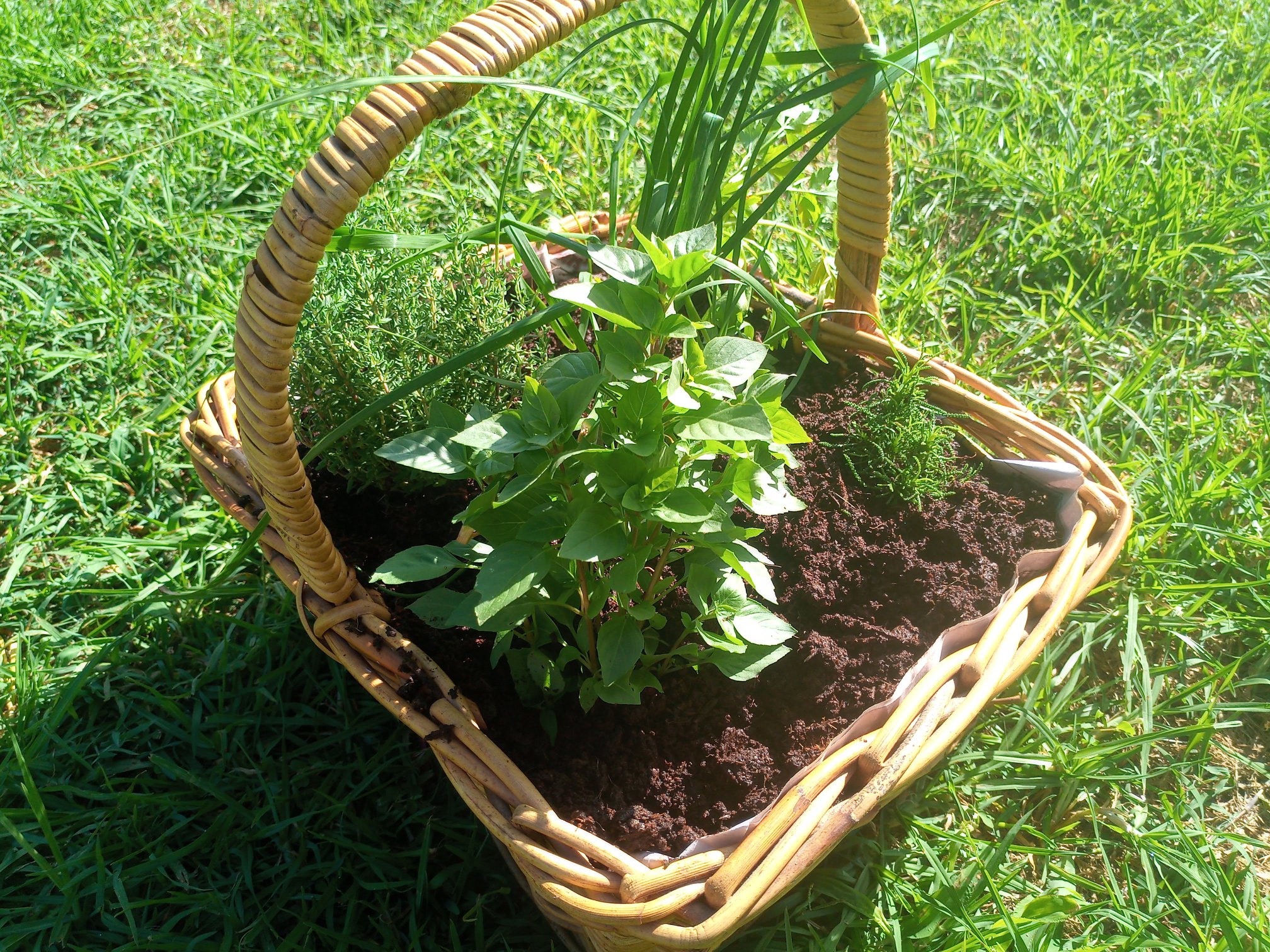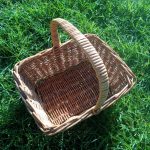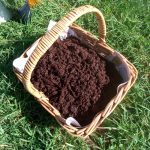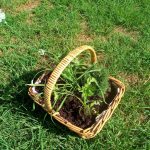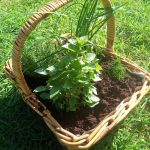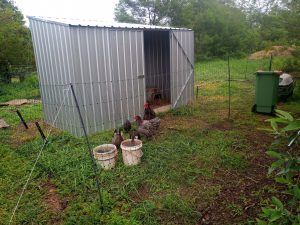There is no need to limit yourself to dried herbs in a jar when you go on holidays just because you have left your herb garden at home. I wanted to be able to add fresh herbs to our salad and cooking even while we were away so I pulled out a cane basket and got to work.
First I lined my basket with newspaper to stop the soil from escaping out through the gaps in the cane as it settled. For this liner you can use whatever you have available – hessian, shade cloth or a cotton shirt would work well, or, to help prevent your soil from drying out, you could also line with plastic and poke holes in the bottom for drainage. Since the basket allows such good airflow you may find your planting soil will dry out more quickly than it does in a plastic pot so to help keep the soil moist consider the following:
• Add something to the soil which helps holds moisture such as coco coir or vermiculite
• Line the basket with plastic to retain the moisture – be sure to punch holes in the bottom for drainage
• Place a sponge at the bottom of your basket to soak up and hold water rather than allowing it to drain away. The water will then be available to the plants when they need it.
• Some swear by cutting open a disposable nappy and mixing the moisture absorbent gel crystals into your soil. I am against the use of disposable nappies in any form so this is something I would not try myself
• Mulch the top of the soil
In my basket I planted garlic chives, parsley, basil, thyme and olive herb. The garlic chives I decided on since the garlic flavour is important in so many dishes. I put this in the centre as I liked the look of a strappy-leafed plant being surrounded by the bushier herbs. In the four corners were the other four herbs – parsley (because no herb garden is complete without it – let’s be honest!), basil (because it makes everything taste amazing), thyme (can’t make a good spaghetti bolognaise without it!), and olive herb (for adding the flavour of olives to many dishes).
When creating your holiday herb basket make sure you consider the following:
• Don’t choose a basket that will be too heavy to carry once full of soil and plants
• Select the herbs you love and use all the time. Space is limited so go for the ones that will prove most useful
• Consider the size of the plants when they mature. If the herb you want is too large for your basket (rosemary for example) then consider alternative herbs that you might use as a substitute, look into dwarf or prostrate forms of that herb, or keep it cut back extremely hard to force the herb to stay small.
• Consider the water requirements of the herbs. If you want herbs that like the soil damp and others that prefer things a little dryer (mint and sage for example) you might need to plant out two baskets and separate the herbs according to water needs.
• If you want to include a vigorous herb that tends to take over (eg mint) then leave it in the plastic pot and bury the whole pot in the soil of the basket to keep it contained
• Fertilize regularly and keep the water up. When planting so densely in a small area the competition for nutrients is high and you will need to keep up with this demand.
Of course your herb basket is not only meant to be appreciated when you go on holidays. What about when you are having a BBQ? How nice to put a basket in the middle of the table so guests can help themselves to their choice of fresh garnish? Choose herbs that go in salads and drinks rather than in cooking such as onion chives, basil (many varieties to choose from), mint, parsley, salad burnet (Sanguisorba minor) for a herb with a cucumber flavour, carrot herb (Aethionema cordifolium) for a herb with a carrot flavour, Vietnamese mint (for those who love the flavour of coriander but have trouble growing regular coriander). These are also great basket choices to take along to picnics and day-outings.
Being in a basket also means that the herbs can easily be moved around depending on the weather and their needs. Rotate the basket so that all herbs get the sun that they need, put the basket in the shade on hot summer days and in the sun on cooler days, move them out into the rain during a storm or into a hot house in winter and enjoy a longer harvest season, and bring them inside for easy access while you are cooking.
Have a basket for winter herbs and a basket for summer herbs, one for a holiday selection and one for a BBQ selection. If the plants start to grow too big for your basket then plant them into your garden and start again!
Now run outside and create your herby oasis!
Jo

